Country
Crash of a Boeing 737-2K6 in San José
Date & Time:
Nov 17, 1991
Registration:
EI-CBL
Survivors:
Yes
Schedule:
Tegucigalpa-Managua-San José
MSN:
20957
YOM:
1974
Crew on board:
6
Crew fatalities:
Pax on board:
36
Pax fatalities:
Other fatalities:
Total fatalities:
0
Circumstances:
The copilot was the pilot-in-command on approach to runway 07 at San José-Juan Santamaría Airport. On final approach, the crew encountered poor weather conditions and limited visibility due to fog and was unable to locate the runway and its lighting system. On short final, the captain realized that the aircraft was not properly aligned on the glide and took over controls. He attempted to correct the trajectory but the unstable aircraft continued to descend and landed to the right of the runway. The aircraft rolled for about 1,500 metres when it struck a drainage ditch. Both main landing gears were torn off and the aircraft came to rest on its belly in a grassy area. All 42 occupants evacuated safely while the aircraft was damaged beyond repair.
Probable cause:
The following factors were reported:
- Poor approach planning,
- Lack of crew coordination,
- The captain failed to initiate a go-around procedure while the aircraft was unstable and not properly aligned,
- Wrong approach configuration,
- Lack of visibility due to poor weather conditions.
- Poor approach planning,
- Lack of crew coordination,
- The captain failed to initiate a go-around procedure while the aircraft was unstable and not properly aligned,
- Wrong approach configuration,
- Lack of visibility due to poor weather conditions.
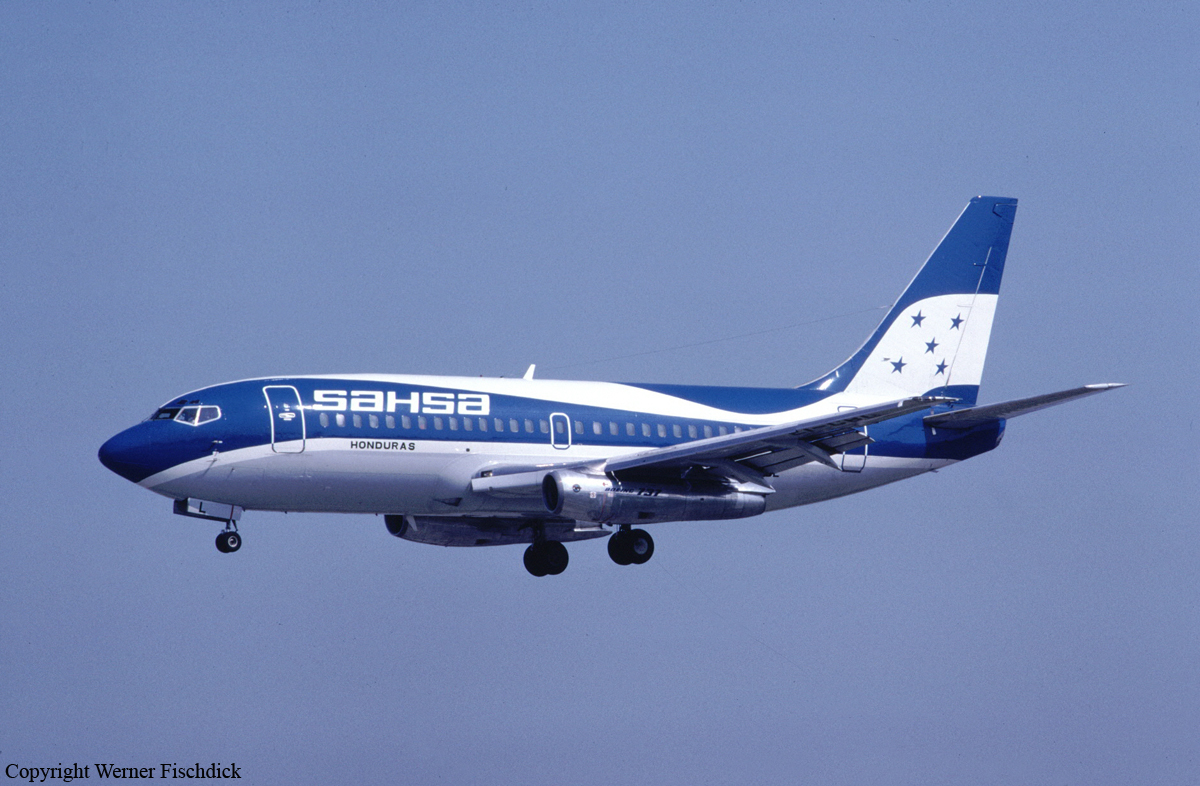

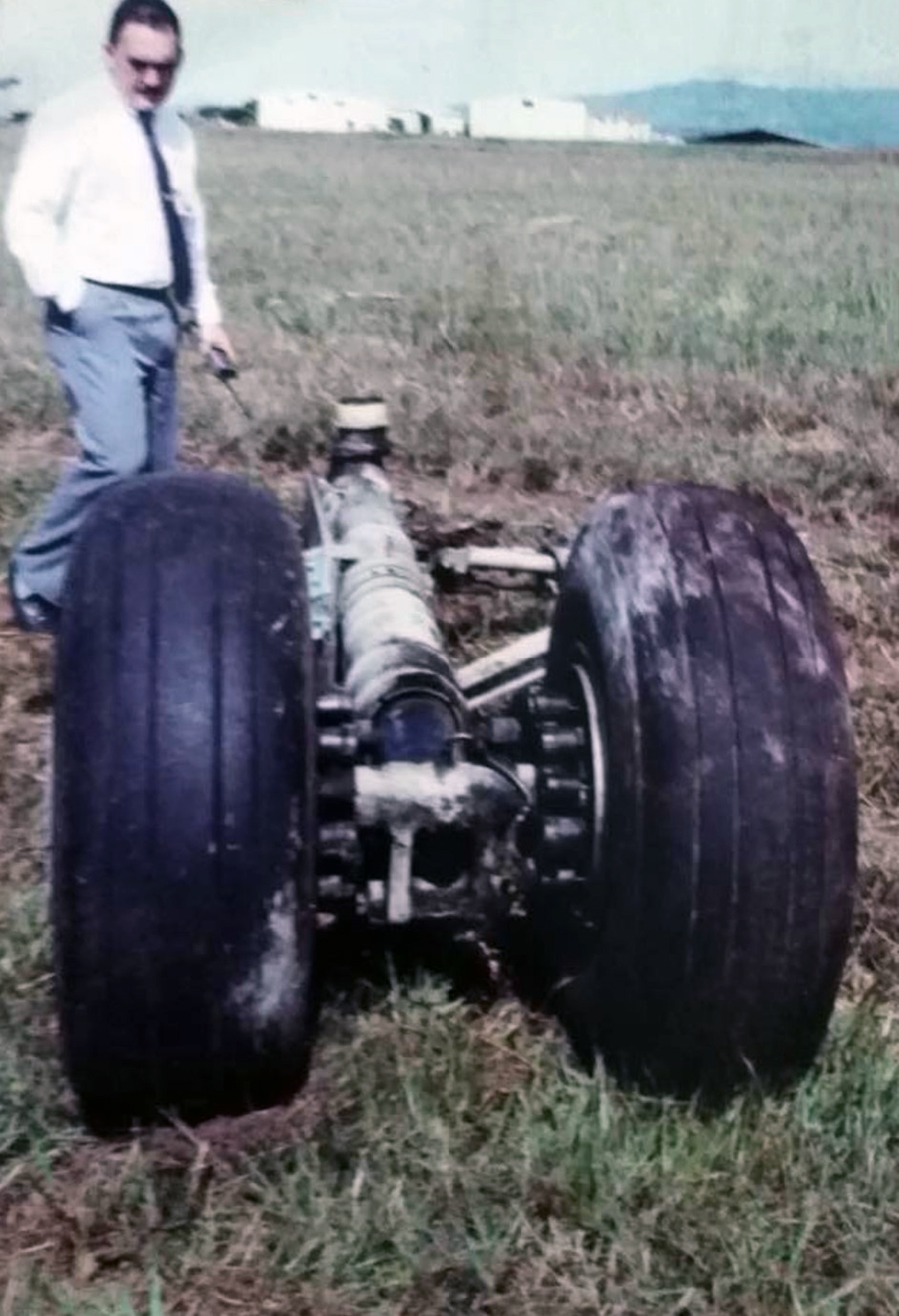
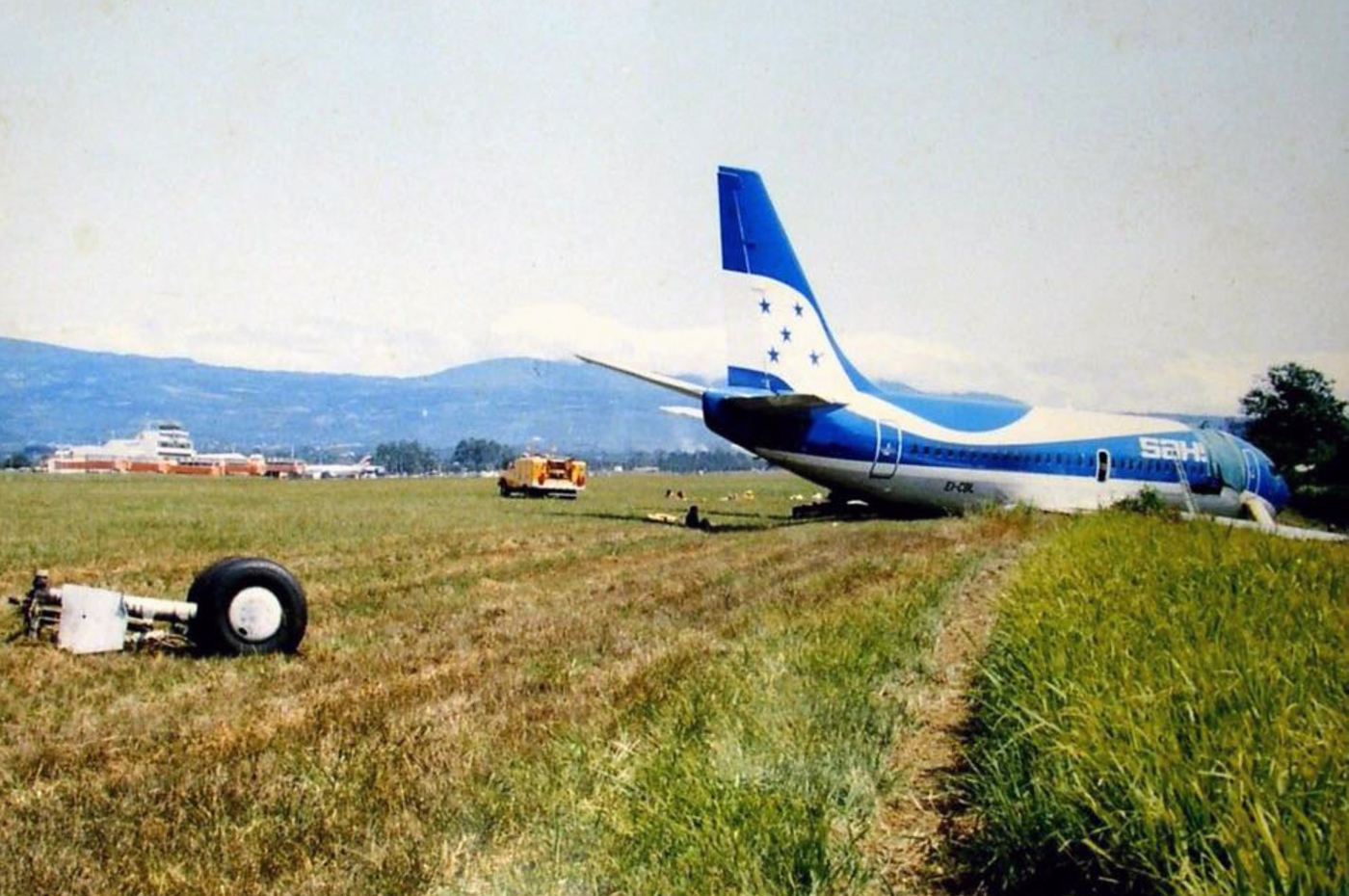
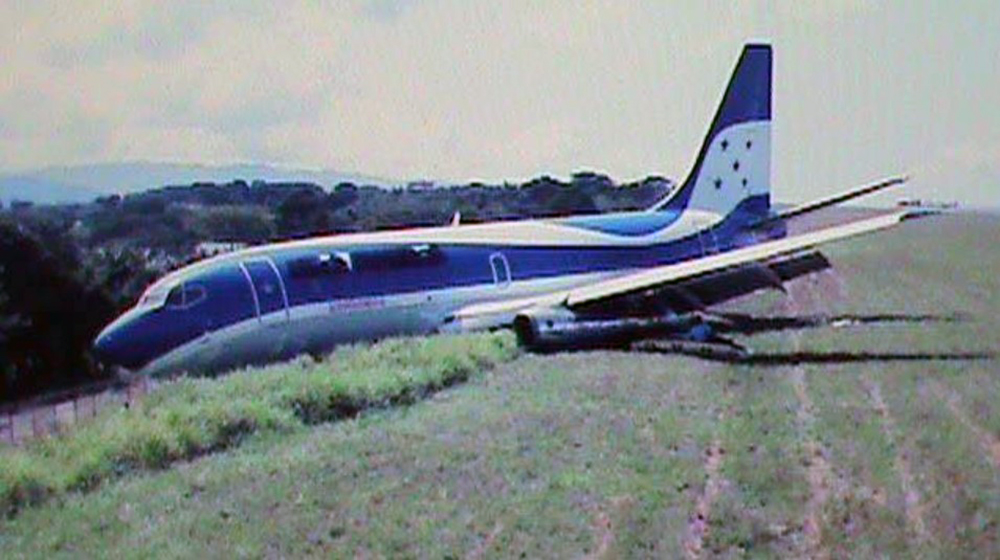
Crash of a Boeing 737-2A8 near Imphal: 69 killed
Date & Time:
Aug 16, 1991 at 1246 LT
Registration:
VT-EFL
Survivors:
No
Schedule:
Calcutta - Imphal
MSN:
21497
YOM:
1977
Flight number:
IC257
Crew on board:
6
Crew fatalities:
Pax on board:
63
Pax fatalities:
Other fatalities:
Total fatalities:
69
Circumstances:
The aircraft departed Calcutta-Dum Dum Airport at 1154 on a regular schedule service to Imphal, Manipur. On descent, the crew encountered poor weather conditions and the visibility was low. After being cleared to descend to 10,000 feet, the crew obtain the permission to make a direct outbound course in view of an ILS approach to runway 04. While completing a turn to join the approach path, the crew failed to realize his altitude was insufficient when the GPWS alarm sounded in the cockpit during 6,3 seconds. The aircraft struck the slope of Mt Thangjing located 39 km southwest of runway 04 threshold and disintegrated on impact. All 69 occupants were killed.
Probable cause:
The accident occurred by reason of a grave error on the part of the Pilot-in-Command in not adhering to the operational flight plan and ILS let down chart and not realizing that his early descent to 10,000 feet and turning right for outbound leg without reporting overhead VOR would result in loss of time reference and as such misplace him in the hilly terrain. The Pilot-in-Command's action may have been influenced by his extreme familiarity with the terrain.
Final Report:

Crash of a Boeing 737-291 in Colorado Springs: 25 killed
Date & Time:
Mar 3, 1991 at 0944 LT
Registration:
N999UA
Survivors:
No
Schedule:
Peoria – Moline – Denver – Colorado Springs
MSN:
22742
YOM:
1982
Flight number:
UA585
Crew on board:
5
Crew fatalities:
Pax on board:
20
Pax fatalities:
Other fatalities:
Total fatalities:
25
Captain / Total hours on type:
1732.00
Copilot / Total hours on type:
1077
Aircraft flight hours:
26050
Aircraft flight cycles:
19734
Circumstances:
On March 3, 1991, a United Airlines Boeing 737, registration number N999UA, operating as flight 585, was on a scheduled passenger flight from Denver, Colorado, to Colorado Springs, Colorado. Visual meteorological conditions prevailed at the time, and the flight was on an instrument flight rules flight plan. Numerous witnesses reported that shortly after completing its turn onto the final approach course to runway 35 at Colorado Springs Municipal Airport, about 0944 mountain standard time, the airplane rolled steadily to the right and pitched nose down until it reached a nearly vertical attitude before hitting the ground in an area known as Widefield Park. The airplane was destroyed, and the 2 flight crewmembers, 3 flight attendants, and 20 passengers aboard were fatally injured.
Probable cause:
A loss of control of the airplane resulting from the movement of the rudder surface to its blowdown limit. The rudder surface most likely deflected in a direction opposite to that commanded by the pilots as a result of a jam of the main rudder power control unit servo valve secondary slide to the servo valve housing offset from its neutral position and overtravel of the primary slide.
Final Report:
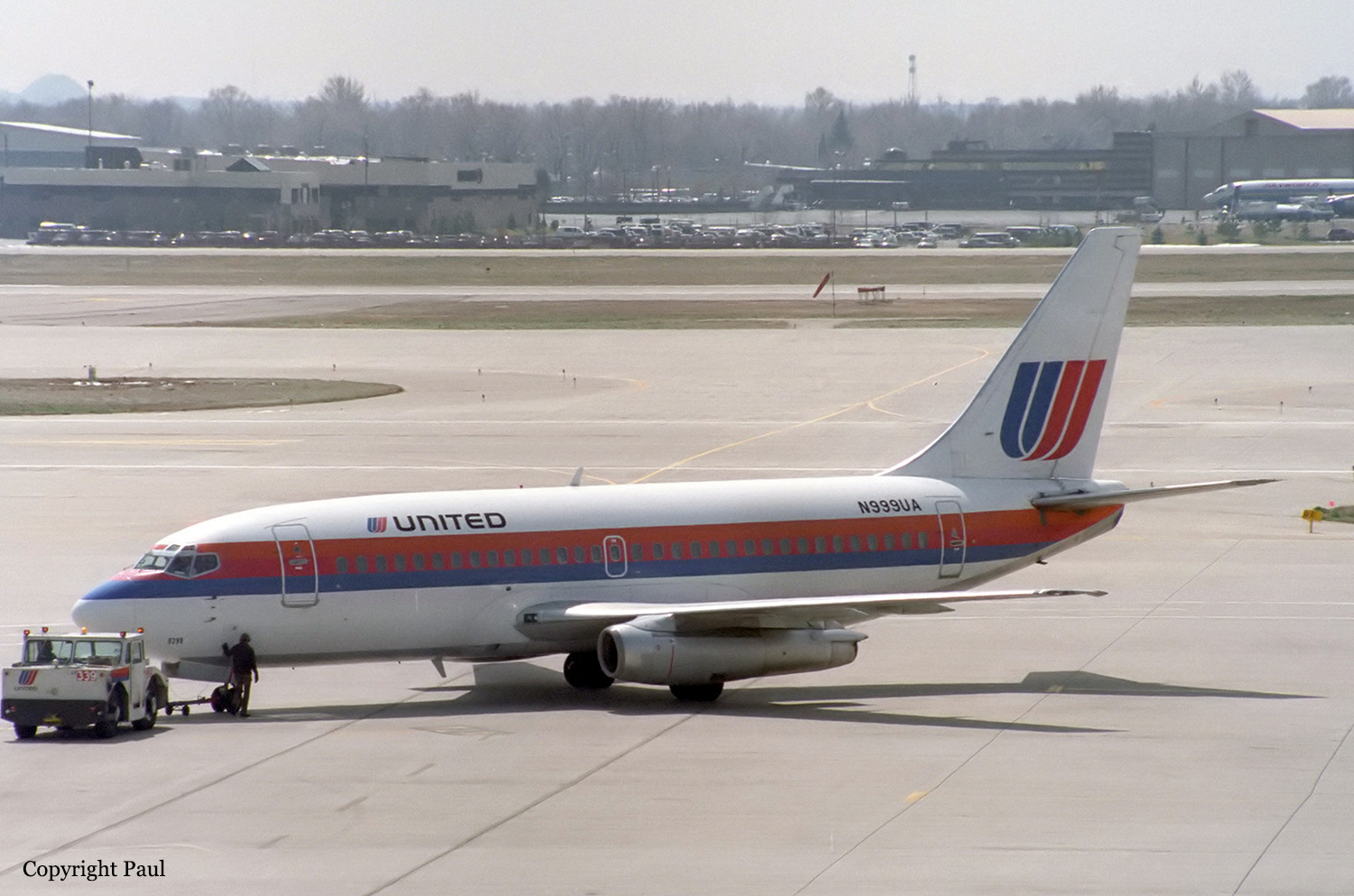

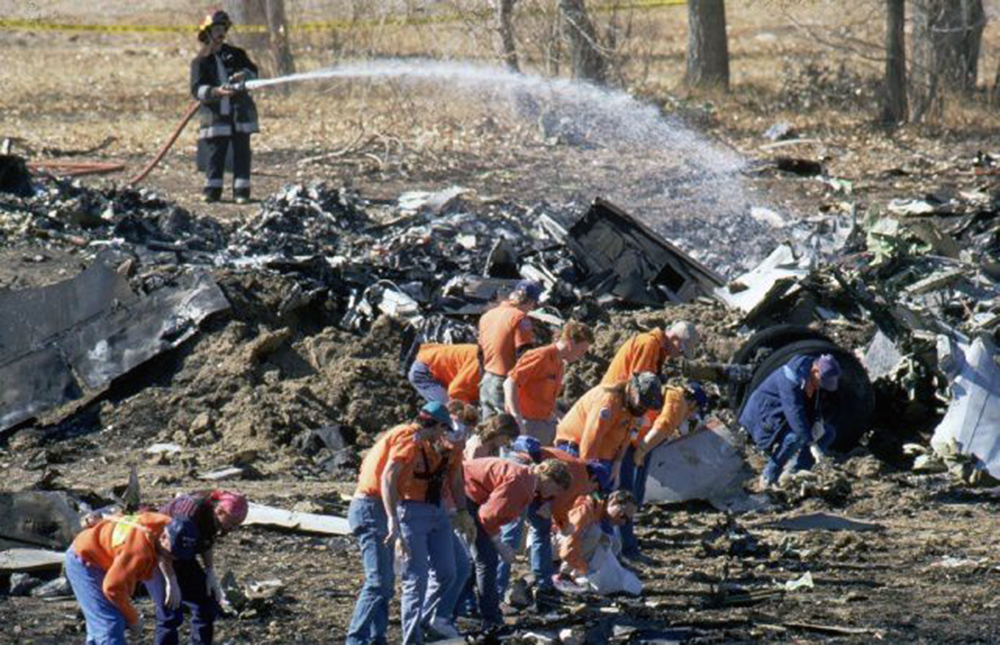

Crash of a Boeing 737-247 in Guangzhou: 83 killed
Date & Time:
Oct 2, 1990 at 0904 LT
Registration:
B-2510
Survivors:
Yes
Schedule:
Xiamen - Guangzhou
MSN:
23189
YOM:
1984
Flight number:
MF8301
Crew on board:
9
Crew fatalities:
Pax on board:
93
Pax fatalities:
Other fatalities:
Total fatalities:
83
Circumstances:
En route from Xiamen to Guangzhou, the aircraft was hijacked by a young man who wanted to fly to Taiwan. He took the place of the copilot who left the cockpit and continued the flight with the captain. On short final to Guangzhou-Baiyun Airport, the hijacker realized he was not in Taiwan and started to fight with the captain who lost control of the airplane. Upon touchdown, the B737 veered off runway to the right at high speed, rolled through the apron, struck the cockpit of a parked B707 operated by China Southwest Airlines (registered B-2402), rolled over a truck and eventually collided with a parked B757 operated by China Southern Airlines (registered B-2812). All three aircraft were destroyed and 130 people were killed, 82 on board the B737, one pilot on board the B707, one driver on the ground and 46 passengers on board the B757.
Probable cause:
Loss of control upon landing after being hijacked.

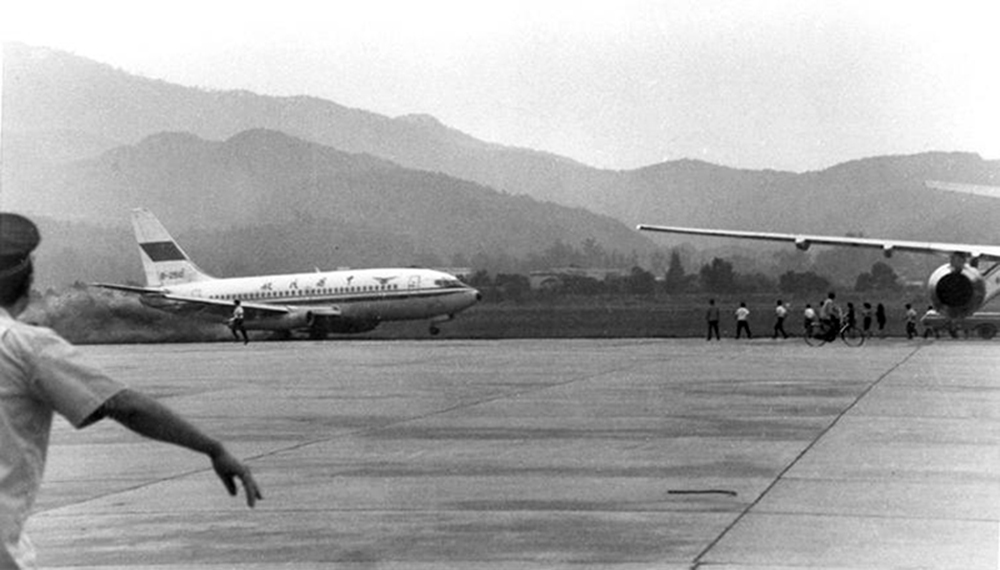
Crash of a Boeing 737-222 in Kinston
Date & Time:
Jul 22, 1990 at 1455 LT
Registration:
N210US
Survivors:
Yes
Schedule:
Kinston - Charlotte
MSN:
19555
YOM:
1968
Crew on board:
5
Crew fatalities:
Pax on board:
22
Pax fatalities:
Other fatalities:
Total fatalities:
0
Captain / Total hours on type:
3300.00
Aircraft flight hours:
51264
Circumstances:
As engine power was increased for takeoff, the n°1 engine accelerated beyond target epr. Engine shut down had to be done with the fuel shut off lever. The asymmetric thrust was controlled with nose wheel steering. Before the airplane could be stopped the nose wheels separated from the landing gear. The investigation revealed that the fuel pump output spline to the fuel control had stripped. It occurred at such a time that the fuel control sensed an underspeed and increased Fuel flow. Misalignment of the spline shaft resulted from improper machining during pump modification. The nose gear inner cylinder failed in fatigue in an area of excessive grinding during overhaul. Two passengers were slightly injured.
Probable cause:
Failure of the fuel pump control shaft because of improper machining by the repair facility during maintenance modification of the pump and improper procedures during overhaul of the nose landing gear.
Final Report:
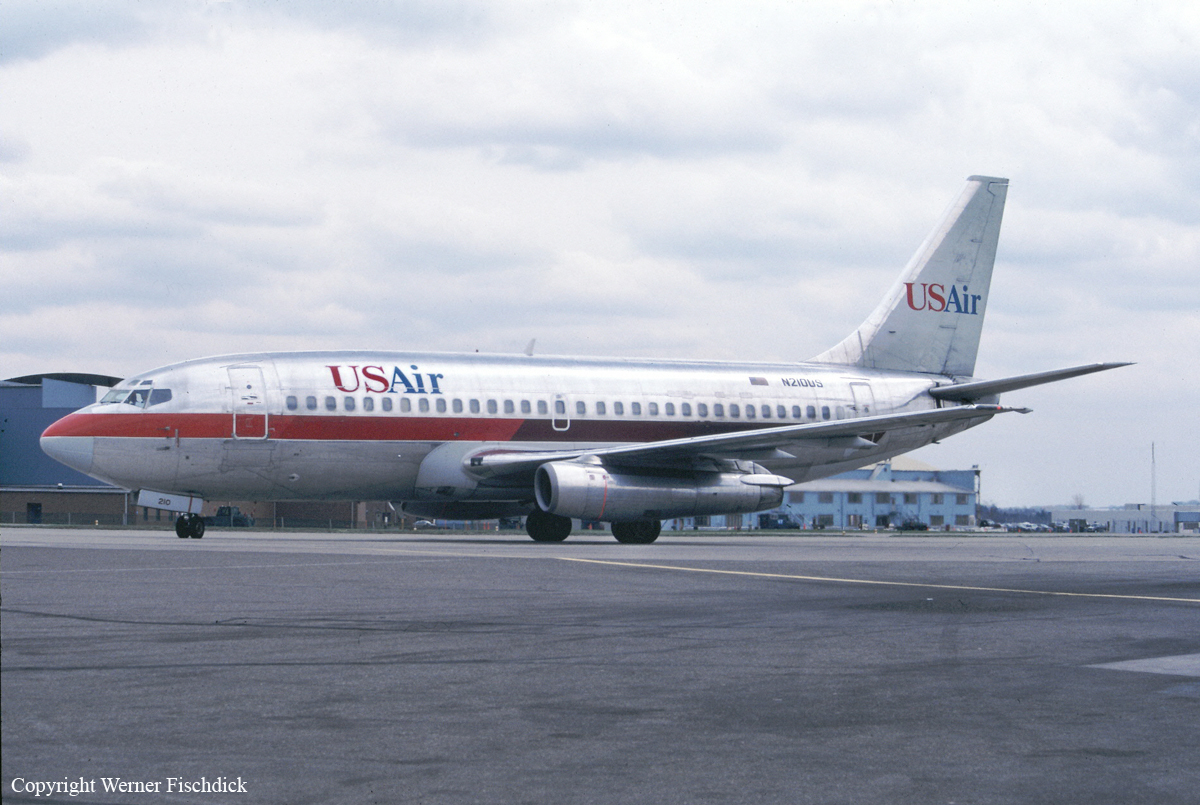
Crash of a Boeing 737-2X6C in Unalakleet
Date & Time:
Jun 2, 1990 at 0937 LT
Registration:
N670MA
Survivors:
Yes
Schedule:
Anchorage - Unalakleet
MSN:
23121
YOM:
1984
Flight number:
BF3087
Crew on board:
4
Crew fatalities:
Pax on board:
0
Pax fatalities:
Other fatalities:
Total fatalities:
0
Captain / Total hours on type:
6400.00
Copilot / Total hours on type:
80
Circumstances:
On june 2, 1990, at 09:37 Alaskan daylight time, Markair, Inc., flight 3087, a Boeing 737-2X6C, registered in the us as N670MA, crashed about 7.5 miles short of runway 14, Unalakleet, Alaska, while executing a localizer approach to that runway. The flight originated at 0828 at Anchorage International Airport, Anchorage, Alaska. Instrument meteorological conditions existed at the time, and the flight was on an IFR flight plan. The captain, the first officer, and a flight attendant sustained minor injuries. Another flight attendant sustained serious injuries. There were no passengers on board, and the aircraft was destroyed. The flight was operated under far part 121.
Probable cause:
Deficiencies in flightcrew coordination, their failure to adequately prepare for and properly execute the unk loc runway 14 non precision approach and their subsequent premature descent.
Final Report:
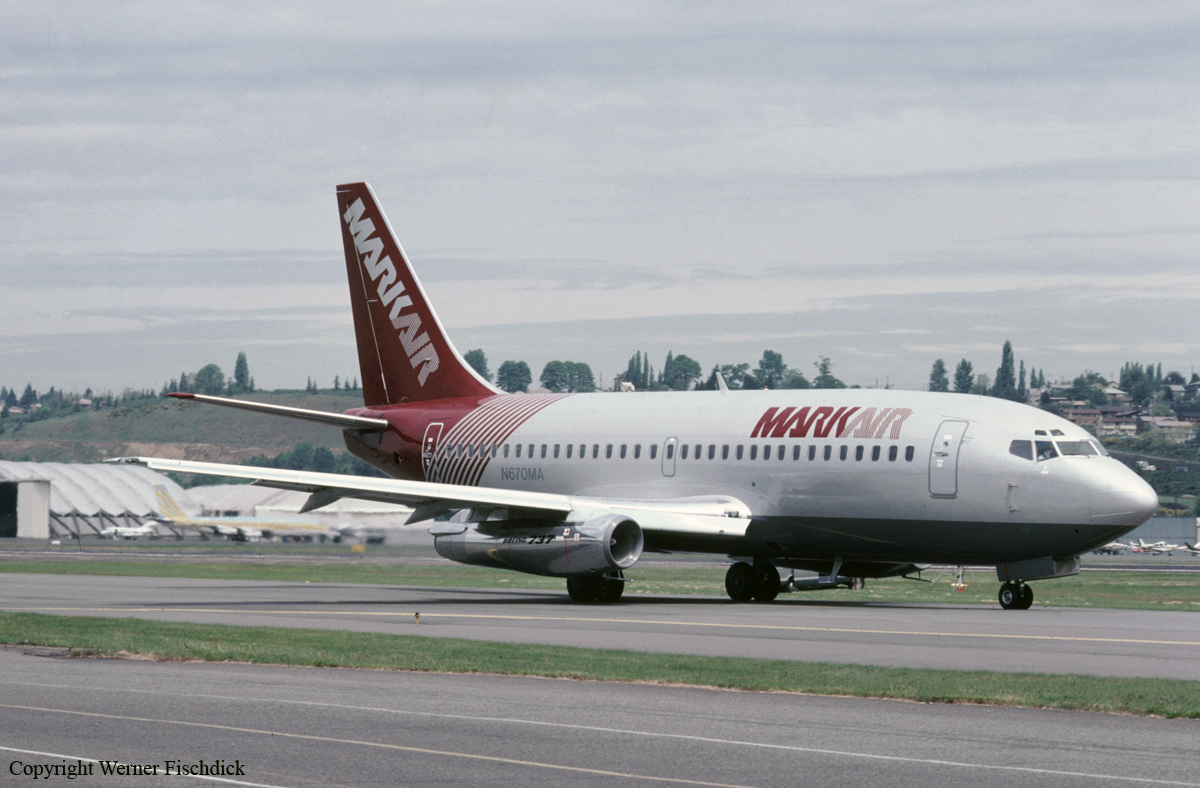
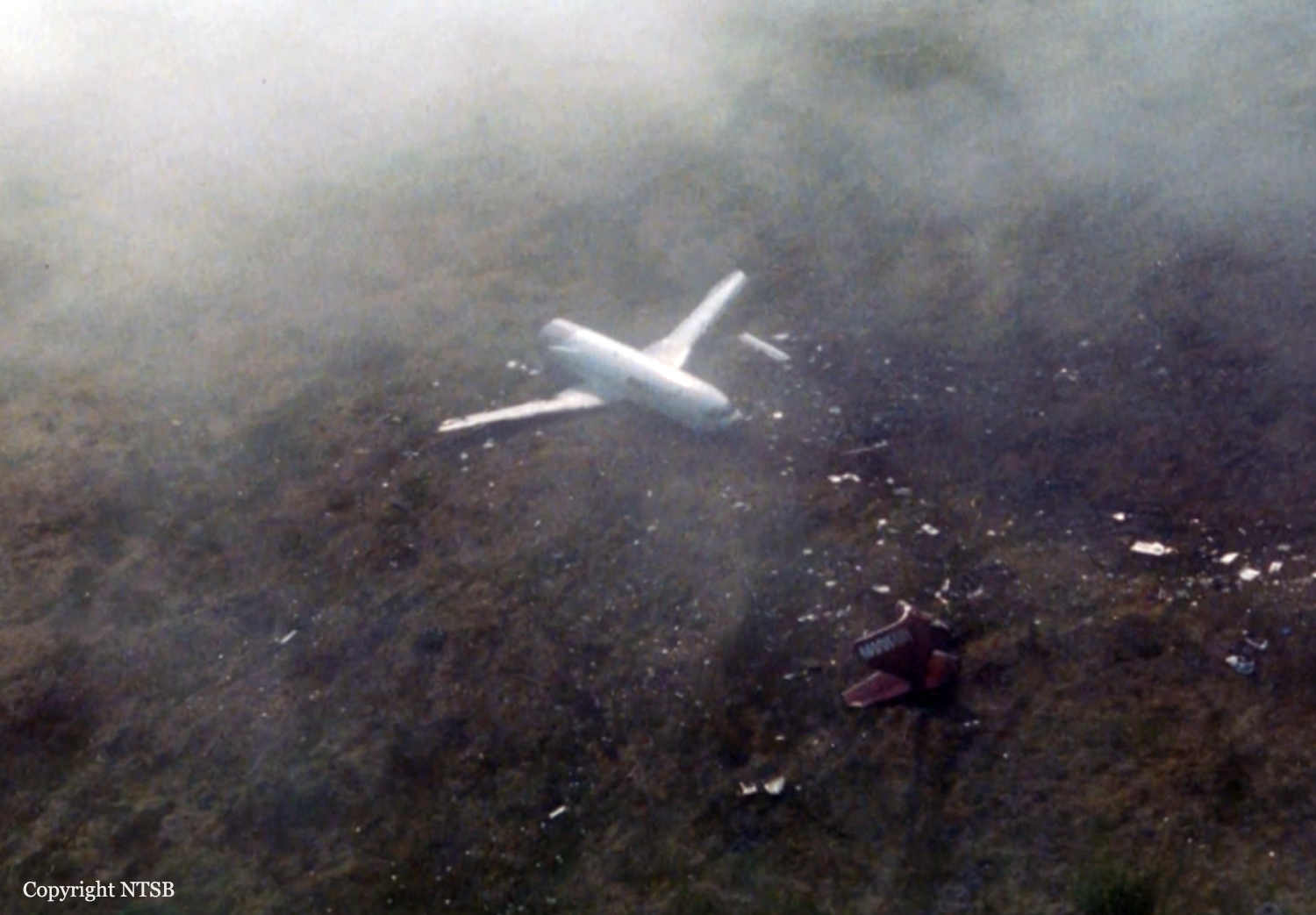



Crash of a Boeing 737-204 in Tucson
Date & Time:
Dec 30, 1989 at 1910 LT
Registration:
N198AW
Survivors:
Yes
Schedule:
Phoenix - Tucson
MSN:
19710
YOM:
1968
Crew on board:
5
Crew fatalities:
Pax on board:
125
Pax fatalities:
Other fatalities:
Total fatalities:
0
Captain / Total hours on type:
3970.00
Aircraft flight hours:
62466
Aircraft flight cycles:
38827
Circumstances:
During approach, a fire erupted in the wheel well of the 22-year old airplane. The fire burned thru the hydraulic lines rendering the a, b, and standby hydraulic systems inoperative. The crew landed the airplane using the emergency manual reversion flight control system. However, the airplane was unable to stop on the runway because of the previous failures of the check valves in the backup hydraulic accumulator pressure systems for the #2 thrust reverser and the inboard pair of wheel brakes. During the 2 minutes rollout, the airplane traversed 14,000 feet, overran the runway end, and collided with a concrete structure which collapsed the nose gear. The airplane had recently undergone a 'C' check during which the operator's mechanics failed to observe and repair an electric wire which had been chafing against a hydraulic line. On the accident flight the energized wire arced, punctured the line, and ignited the escaping hydraulic fluid. The hydraulic check valves had failed earlier due to mechanical wear.
Probable cause:
Failure of the operator's maintenance personnel to detect an electrical wire which had chafed against a hydraulic line and which eventually arced causing a leak in the hydraulic line and subsequent fire and hydraulic system failure. In addition, previous wear of check valves in the backup hydraulic systems prevented the airplane from stopping on the runway. A contributing factor was the airplane manufacturer's inadequate guidance for maintaining the hydraulic components.
Final Report:
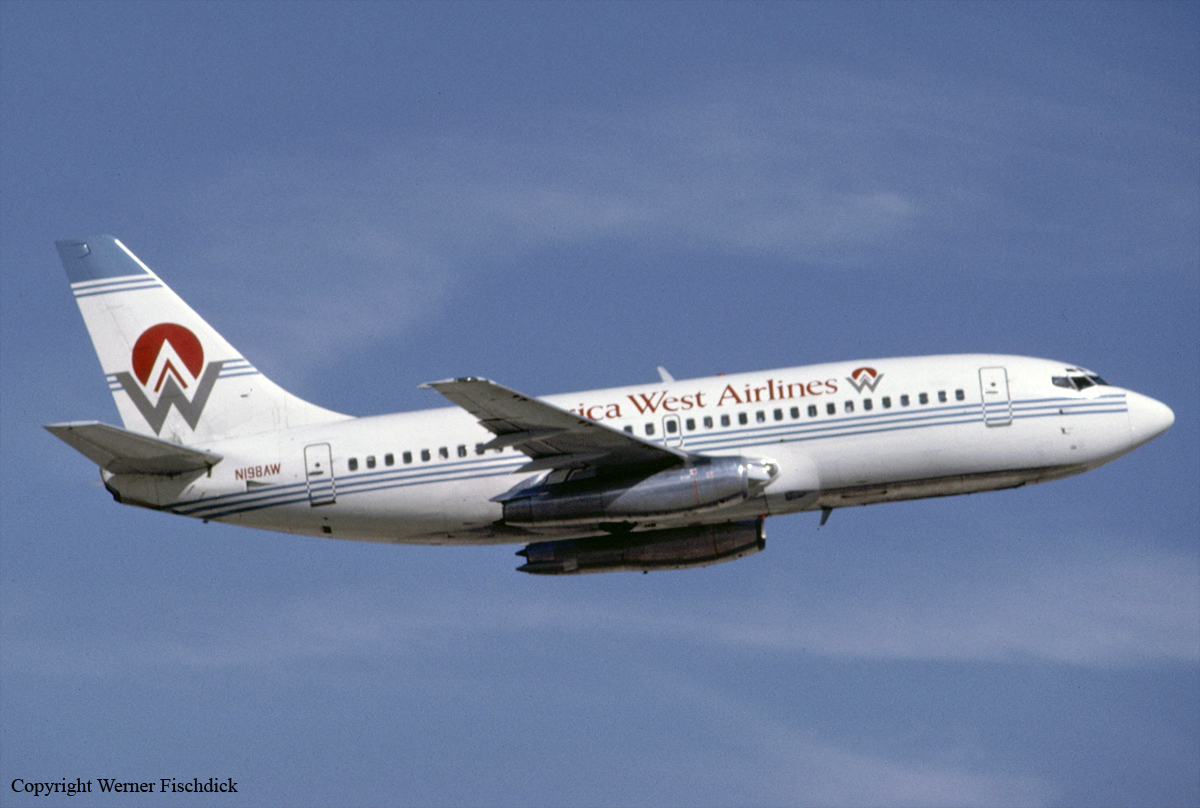
Crash of a Boeing 737-209 in Hualien: 54 killed
Date & Time:
Oct 26, 1989 at 1855 LT
Registration:
B-180
Survivors:
No
Schedule:
Hualien - Taipei
MSN:
23795
YOM:
1986
Flight number:
CI204
Crew on board:
7
Crew fatalities:
Pax on board:
47
Pax fatalities:
Other fatalities:
Total fatalities:
54
Circumstances:
Following a night takeoff from runway 03 at Hualien Airport, while climbing, the crew initiated a turn to the left when, at an altitude of 7,000 feet, the aircraft struck the slope of a mountain located in the Chiashan Mountain Range located about 10 km northwest of the airport. The aircraft disintegrated on impact and all 54 occupants were killed.
Probable cause:
It was determined that the collision with the ground was the consequence of a controlled flight into terrain after the crew failed to follow the proper departure route and published procedure.
The following contributing factors were reported:
- Poor flight preparation,
- The crew failed to follow the departure route from runway 03 and initiated a turn to the left, a procedure valid for runway 21 departure onl. After takeoff from runway 03, crew must turn to the right over the sea,
- Poor crew coordination,
- The crew failed to follow the pre-takeoff checklist,
- Poor visibility due to the night.
The following contributing factors were reported:
- Poor flight preparation,
- The crew failed to follow the departure route from runway 03 and initiated a turn to the left, a procedure valid for runway 21 departure onl. After takeoff from runway 03, crew must turn to the right over the sea,
- Poor crew coordination,
- The crew failed to follow the pre-takeoff checklist,
- Poor visibility due to the night.



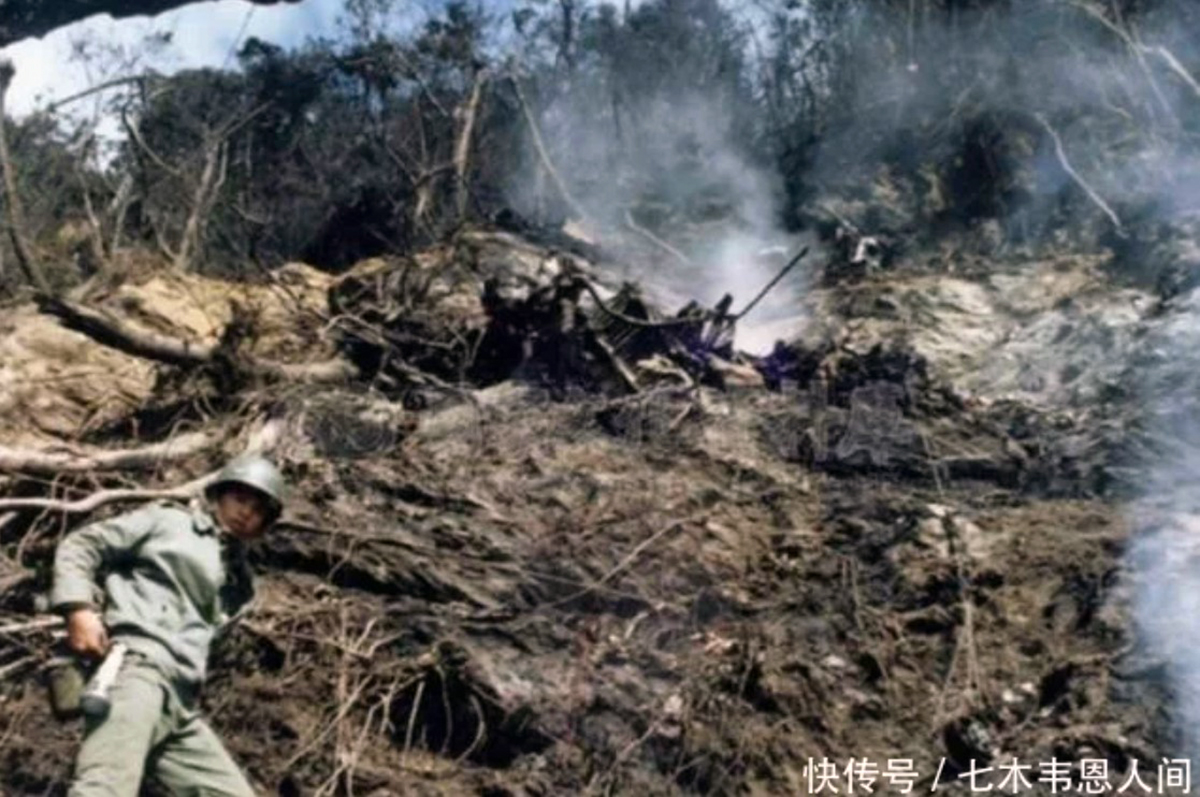
Crash of a Boeing 737-2F9 in Lagos
Date & Time:
Oct 2, 1989
Registration:
5N-ANX
Survivors:
Yes
MSN:
22772
YOM:
1982
Crew on board:
6
Crew fatalities:
Pax on board:
129
Pax fatalities:
Other fatalities:
Total fatalities:
0
Circumstances:
Following a normal approach, the aircraft landed on a wet runway and was unable to stop within the remaining distance. It overran, lost its nose gear and came to rest few dozen meters further. All 135 occupants evacuated safely and the aircraft was damaged beyond repair.










